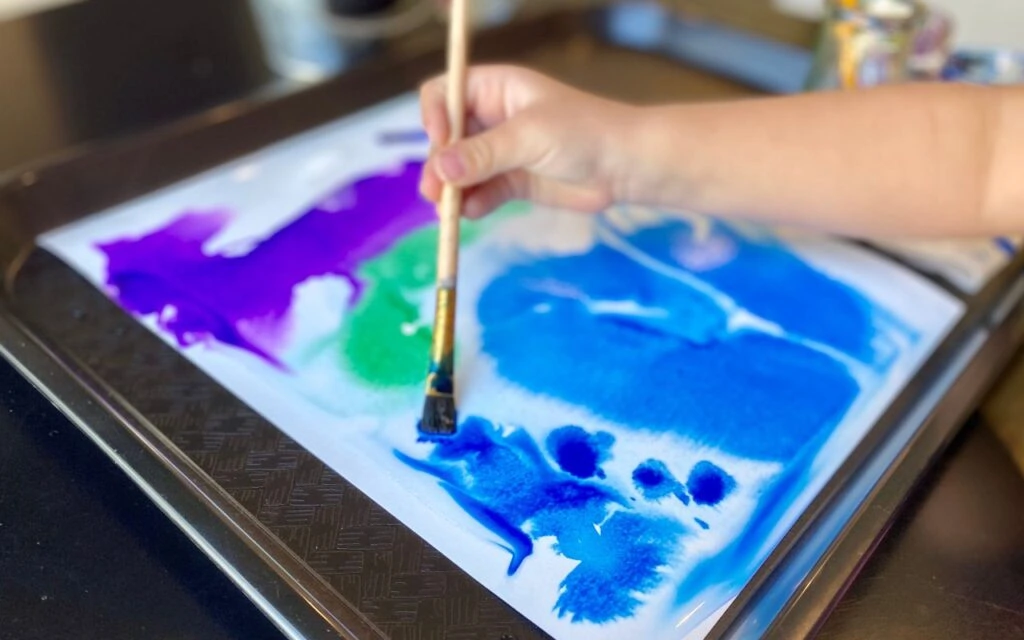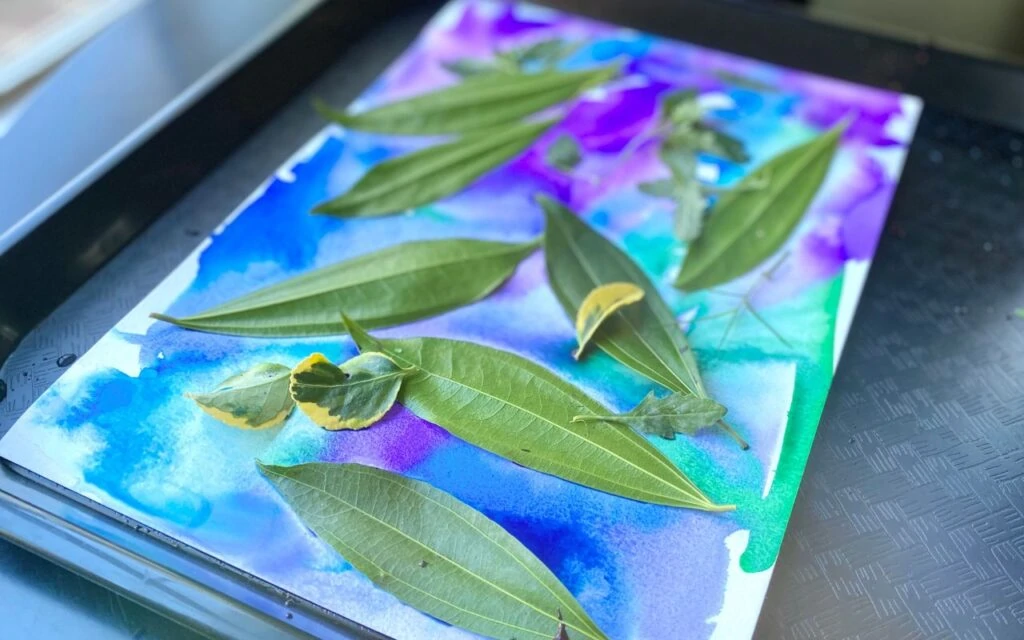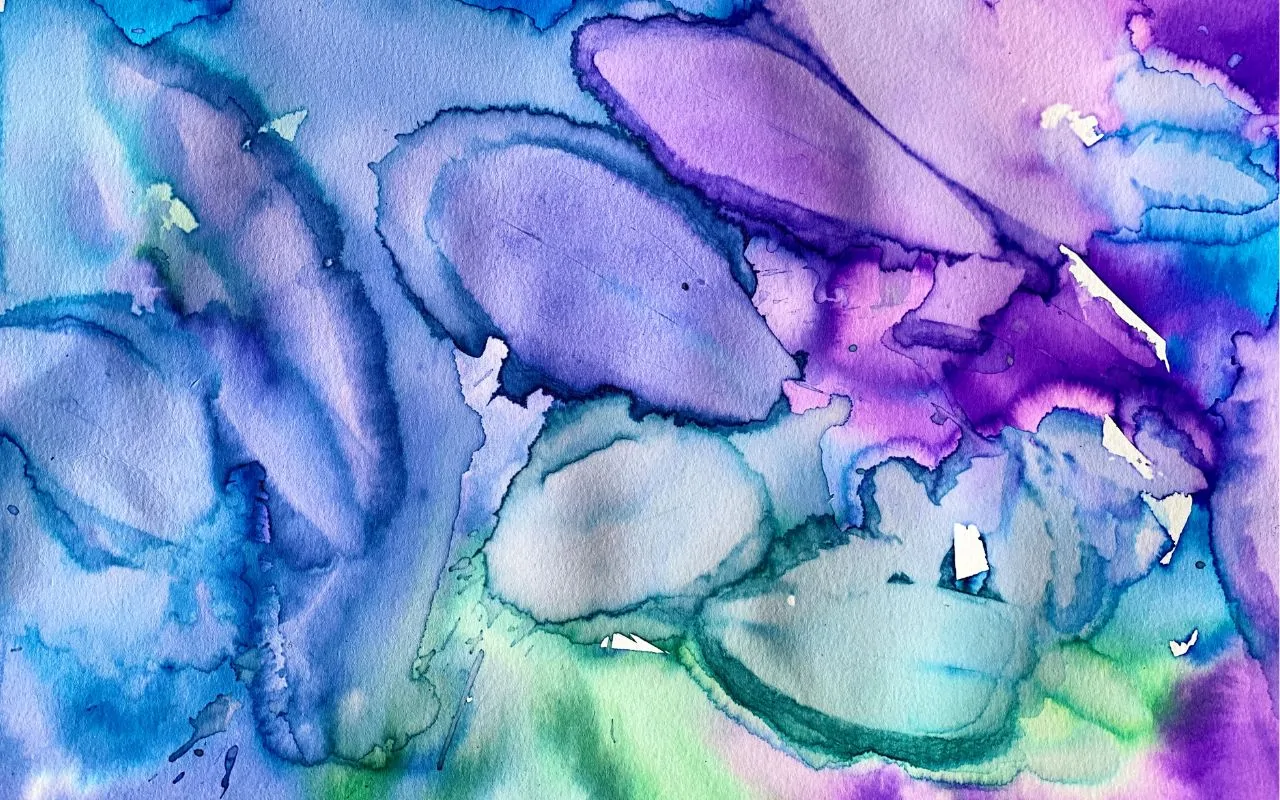Encounters between art and nature have the power to arouse our curiosity and draw our attention to shapes and processes.
When experimenting with leaves and paint, children will explore the concept of absorption and propelling as the leaves capture the water and send the pigment to their edges.
Through this art proposal, children can develop their sense of cause and effect and gain knowledge about natural features, comparison, and contrast.
What Could Lead Us to This Play Invitation
- Children have been drawing with an emphasis on the outlines of elements;
- Children are excited about trails and traces.
Materials Needed
- Liquid watercolors
- Leaves
- Watercolor paper
- Brushes
Setting up This Play Invitation
- During your outdoor walks, invite children to collect leaves. The wider the variety of shapes, the better!
- Prepare a flat surface to dry the paintings horizontally, so the paint doesn’t run.
- Place watercolor paper and the liquid watercolors, with brushes, on a table. You can place the paper on a tray to better define the workspace.
How to Create the Painting
- Invite children to place a watercolor wash on the paper using the brushes.

2. While the paint is still wet, lay leaves over the wet paper.
3. Let the painting dry before removing the leaves.
4. Observe the results with the children and wonder about what they see.

Optional Next Step: Use the leaves as a stamp. Invite children to cover one side of a leaf with watercolors and stamp it on a piece of paper. Does the ink behave differently? What shapes do the leaves create?
How to Nurture the Natural Unfolding of the Child’s Identity During This Play Invitation
- Young children have the right to keep any misconceptions they may have about how our world works. These fabrications are how they see, and explain to the themselves, the phenomena they experience. The important thing at this stage is that you give plenty of opportunities for them to share their ideas with peers and teachers, build arguments, think creatively, and remain curious.
- Young children have the right to engage and learn to respect the environment. And almost every daily experience is a good teaching moment. In the case of this Play Invitation, children are learning important things like: What leaves can we collect? From what areas? How, and why? When children learn by getting involved, by participating, the learning gains a deeper meaning.
The Academic Learning Opportunities
- MATH: Name and describe spatial elements such as over, middle, left, right, and under. Build awareness of quantity, like “Here, there’s a lot,” and “Here, there’s less,” and the concept of lines and shapes.
- LANGUAGE: Engage in exploring new vocabulary to communicate ideas.
- SCIENCE: Explore concepts such as spread, mixed, leaves’ reaction to water and pigment; use observation and investigation to identify, describe and seek explanations for phenomena, and to formulate new theories.
- ART: Develop perception of colors and hues, experiment with composition and visual balance.
Extensions
- Invite children to notice shadow outlines of objects and themselves. You can tape a large piece of paper to a wall and shine a flashlight or projector on the paper. Invite one or two children to sit between the light and the paper and another child can trace their shadow with a pencil or marker.
Book Recommendation

A wordless book that celebrates the power of imagination.

